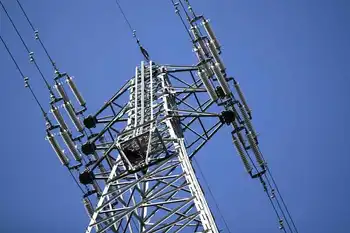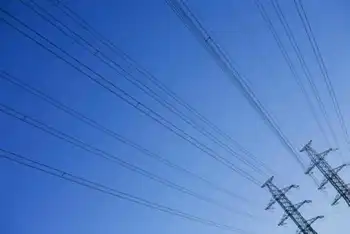Looking for support on U.S. emissions bill
By Detroit Free Press
Protective Relay Training - Basic
Our customized live online or in‑person group training can be delivered to your staff at your location.

- Live Online
- 12 hours Instructor-led
- Group Training Available
It's by no means clear that they will succeed, however.
A climate and energy bill squeaked through the House of Representatives in June. But in the Senate, the odds are against it because Senate rules generally require a 60-vote majority to move legislation to a vote.
Looking for ways to revise the House measure to make it palatable for senators is a key goal. Senate committees have a September 28 deadline for writing legislation, with floor action likely in October. Senate Majority Leader Harry Reid of Nevada wants to have a bill ready for President Barack Obama's signature before international negotiations begin on a climate treaty in December in Copenhagen, Denmark.
"We believe this bill is going to be good for the economy," Sen. Barbara Boxer, D-Calif., the chairman of the Environment and Public Works Committee, said in between private one-on-one meetings with senators. Boxer, a leader in efforts to draft a Senate version of the bill, said it will be called the Climate Security Jobs Act.
The bill's backers intend to use many of the same themes that came up in the House debate: opportunities for clean energy jobs and greater energy security.
"We're going to hew pretty closely to what they did in the House," where the bill was written to take into account the concerns of coal states, manufacturing interests and others, said Sen. John Kerry, D-Mass., who's also leading the Senate's drive for a climate bill. "We've got some notions where it can be legitimately improved, but we're going to approach it in a thoughtful way."
The House-passed legislation would set up a system of permits that companies would be required to buy to emit greenhouse gases. The amount of allowable emissions would decrease over time.
Many provisions in the House bill were designed to overcome objections that helped kill consideration of the bill in the Senate last year. One, for example, would grant free permits to energy-intensive industries such as steel that could be harmed by competition with companies in countries that don't have emissions reduction requirements.
Another would direct some of the money from permit sales to state-regulated electricity distribution companies in an effort to hold down rates that some say the emission limits would cause to rise.
The House-passed bill also includes higher efficiency standards for appliances and buildings, a requirement for all states to tap a certain amount of electricity from renewable sources such as solar and wind, and funding for the development of an underground storage system for carbon dioxide emissions from coal-fired power plants.
Sen. Dianne Feinstein, D-Calif., said a lot of other senators would vote for the bill as long as there are some changes.
Few people dispute the urgency of the need to take action to protect the climate, Boxer said. "A few weeks ago, this administration released a sobering report on the impact global warming is having across the United States, and the devastating effects that will come in the future if we do not take action: droughts, floods, fires, loss of species, damage to agriculture, worsening air pollution."
Getting 60 votes will be difficult, however. Twenty or more Democrats are wary of supporting the legislation, and most Republicans are considered likely or probable "no" votes.
Adding to the trouble is the sheer complexity and reach of the effort.
"Everyone has different issues on the table," said Sen. Olympia Snowe of Maine, a moderate Republican. "To get this passed, we have to make sure everyone is comfortable with all the issues, and you do that gradually."
The issues include how emission permit sales will be regulated, how protections for industry could harm international trade, and what's in the bill to protect the economic interests of coal-dependent states and agriculture.
Democrat Sherrod Brown of Ohio plans to look at how the bill could protect consumers in heavily affected states and support manufacturers, said his press secretary, Meghan Dubyak.
Brown and others see potential in the bill for creating new jobs in clean energy.
New jobs will be the "key strategic message," said David Foster, the executive director of the labor-environmental group Blue-Green Alliance. The legislation would create new jobs, especially in the hard-hit manufacturing and construction sectors, by pushing improvements in the electricity grid and expansion of renewable energy and more efficient buildings, he said.
"It's exactly what our economy needs" with unemployment at 9.4 percent and expected reach 10 percent in coming months. Still, Foster added, "I'm very concerned that the Senate isn't getting this. They're not grasping that this is a desperate time for America's working families and we need bold leadership for creating clean energy."
As Republicans did in the House, their Senate counterparts assert that the bill would make energy costs skyrocket.
But two recent government analyses showed the cost increases would be modest. Environmental and energy efficiency groups have said that consumers could even save money.
Democrats concede that despite strong evidence the cost will be reasonable, that's becoming a hard sell to constituents. "I don't really know how we do it," said Sen. Jeff Bingaman, D-N.M., the chairman of the Senate Energy and Natural Resources Committee. Manik Roy, the vice president of federal government outreach for the Pew Center on Global Climate Change, which works closely with businesses, said what's needed is a way to bring Republicans in as supporters.
"By my count one-third of Senate Republicans care about climate change. They recognize it's a big problem and we need to do something about it," he said.
Many Republicans who favor action on climate are strong proponents of nuclear power. For that reason, some Senate observers say there's likely to be a debate about whether the bill should contain more government policies favoring nuclear power. The House-passed bill already contains provisions that support private investment in nuclear power. It also makes nuclear power more attractive by raising the price of fossil fuels.
The climate debate in Congress comes at a time when new scientific reports show that observed climate changes are happening at a faster pace than previously projected.
A recent study by researchers at the Massachusetts Institute of Technology found a 50 percent chance of an increase of 9.4 degrees Fahrenheit by 2100, compared with a past projection of 4.3 degrees. That study also found a 17 percent chance of an increase of nearly 11 degrees.
"Eleven degrees may not sound like much, but, during the last ice age, when Canada and much of the United States were covered all year in a glacier, the world was only about 11 degrees colder," said Energy Secretary Steven Chu, a Nobel Prize-winning physicist, in a hearing. "A world 11 degrees warmer will be very different as well."











